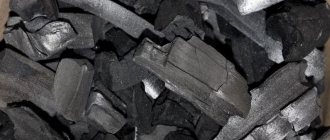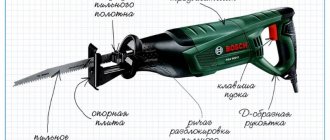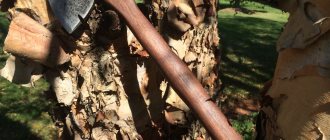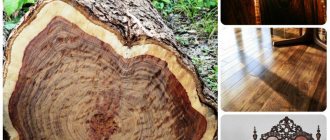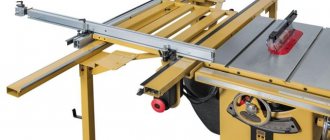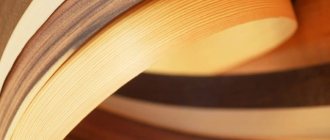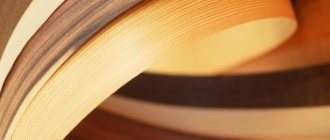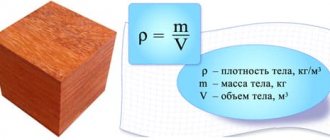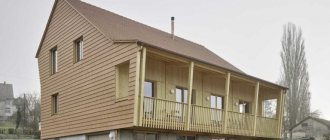Design Features
Thicknessers belong to the category of woodworking equipment; they plan dried boards and bars, making them the same in thickness. There are six main elements in them:
- knife shaft;
- Desktop;
- bed (base);
- clamps;
- guide slides;
- rollers.
The main working body is the knife shaft. Several knives are attached to it, the number of which depends on the purpose and type of unit. For example, single-sided machines have only one, while double-sided machines have two shafts.
The work table is a horizontal surface on which the cutting depth is formed. It is made of wood and carefully polished.
The main elements (shafts and table) are mounted on a hollow cast iron base, the purpose of which is to give stability to the thickness planer. The support table is made of wide metal corners (at least 100x100 mm) 1 m long. The table is connected to a cast iron base, and the structure is fixed with clamps. To adjust the height of the machine, you need to loosen the clamps and raise/lower the base along the guide slides.
Rollers are elements of the feed mechanism of a thickness planer. There are two pairs of them: some are located above the trajectory of the workpiece and are called drive (since they are started from the engine), others are located below them in parallel and are called feeders.
Operating principle
The main method of processing workpieces on a machine is flat planing, which is also typical for an electric planer. The boards are fed onto the work table manually or using rollers (rollers) that press them against the supporting surface. In the first case, the operator needs to control the feed speed himself; in the second, the workpiece moves at a speed that is automatically set by the program.
One of the sides is processed with knives, as a result of which it becomes even and smooth. An important requirement is that before processing on a planer, the workpiece is planed in a planer. It can also be obtained by cutting with a circular saw.
Planing tools are not just for workpieces with parallel edges. If you use backing templates (tsulagi), it is possible to process bars with asymmetrical opposite sides.
The larger the lumber table, the better the surface finish. To do this, manufacturers increase its length. For the purpose of better planing, grooves are made in the processed wood, reducing the friction force. But even when these conditions are met, the workpiece can be damaged if the feed speed is high (especially with a deep cut). Maximum smoothness is achieved by reducing the speed of rotation of the knife shaft and making the last passes to a shallow depth.
What it is
A thicknesser machine (in common parlance - thicknesser) is used for one-, two- or multi-sided planing of a wooden board, beam or board panels in one pass to a given size.
The fundamental difference from a planing (jointing) machine, which is more familiar to the home craftsman, is that the thicknesser allows you to obtain a product of a given thickness not after several runs with continuous measurement of the size, but in one go:
- A workpiece of arbitrary size is fed into the receiving pair of rollers;
- On the other side of the machine comes a perfectly planed board or board of the required section.
Let us clarify: in practice, if the workpiece is fed too quickly, knife marks in the form of shallow “waves” may remain on it, so the board will still need final processing for use in carpentry.
The obvious advantage of a thickness planer is its enormous time savings, primarily when producing a large number of parts of the same thickness. In addition, when installing shaped knives, a thicknesser allows you to produce profiled beams, baguettes, wooden baseboards and many other wooden decorative elements.
The output is a board smooth on both sides.
Specifications
The main indicator of the equipment is the size of the workpieces that can be planed. The industrial thicknessing machine works with parts up to 1.25 m wide and up to 16 cm thick. These are maximum values and vary from device to device.
Other important characteristics of the machine are:
- planing depth (for thicknesser and jointer (if available) usually does not exceed 5 mm);
- blade shaft rotation speed;
- wood feed speed (m/min);
- machine dimensions;
- weight (for stationary ones it is 25-35 kg);
- diameter of the knife shaft(s);
- power consumption (at least 900 W).
All characteristics of sawing machines are indicated in the technical documentation for the product. In addition to the technical passport, the kit includes a manual (user's manual) and a warranty card for the machine.
Classification and capabilities
The design of the units in question can be quite varied. Machines are classified according to the following criteria:
- By drive type. Homemade mini-devices can also have a manual drive, but in most cases they still use an electric drive. At the same time, household models are equipped with a 220 V motor, and professional ones – with a 380 V motor.
- By type of delivery. The machine design may have one or two pairs of feed rollers; accordingly, in the first case, it will be necessary to make the pressure of the workpiece being processed to the table more powerful; vibrations at the time of cutting cannot be excluded. Double-sided roller feeds are more advanced and convenient to use. A number of foreign companies (Makita, DeWalt, etc.) equip their products with automatic feed units, but this option is justified only with significant production programs of the same type of products.
- According to the number of knife shafts. This determines how many different profiles the machine can process simultaneously. True, the number of operators will increase accordingly.
- By functionality. The design of thicknessing machines allows not only dimensional processing of a semi-finished product, but also its subsequent calibration. This eliminates the appearance of transverse chips, dents and other defects that may appear on the treated surface in case of non-compliance with the jointing technology or with an excessively large supply of starting material.
- According to its technological characteristics. In practice, the equipment under consideration is produced with a power range of 1...40 kW, at a shaft speed of up to 10000...12000 min-1, planing width up to 1350 mm, stroke up to 50 m/min and thickness of the initial workpiece 5...160 mm.
In addition, some models differ in the way they adjust the gaps and the design of the main drive bearing assembly.
The process of working at an electric machine
To plan lumber, the operator must place the piece on the table at a 90-degree angle to the cutter shaft(s). When feeding manually, the workpiece must be pressed on both sides with your hands and smoothly fed towards the knives (it is advisable to learn how to do this with one hand, otherwise the part may move).
The processed part of the workpiece must be accepted from the opposite side of the machine; if this is not possible (due to the size of the room), remove it and direct it at the other end. Similar actions should be performed with other faces of the workpiece to be processed.
It seems that working with a sawing machine is simple, but this is a misconception. Only an experienced craftsman will correctly feed the part onto the knife shaft; a beginner will waste a lot of material before achieving the required result.
Types and differences of equipment
There are several classification criteria, and some of them are briefly mentioned above. The following is a list of the main indicators of thicknessing machines for wood processing.
The maximum width of the workpiece is determined by the dimensions of the machine. If a part does not fit on the workbench, it cannot be processed.
Wood thickness. A table thicknesser used at home processes boards up to 3-5 mm thick. Stationary equipment used in production can handle templates up to 160 mm high.
Electric motor power. The parameter determines the purpose of using the device. Compact machines for everyday use have a power of 0.9-1.5 kW, industrial models - up to 50 kW. The higher the power consumption of the unit, the higher the energy costs will be.
Degree of automation. We are talking about the ability of the work table to feed a workpiece at a given speed and with minimal operator energy consumption. Modern machines have additional pedals, control panels, rotating rollers, and devices for fixing workpieces.
Additional options. An example is the chip removal function. The more thoroughly unnecessary material is removed from the surface, the better it is. The process can be automated or performed manually.
The five most important classification criteria are worth remembering - they will be useful when selecting a machine for personal or industrial purposes.
It should also be noted that sometimes thicknessing machines are combined with jointers in order to obtain smooth, even materials of equal thickness. Combined jointer-thicknesser household woodworking machines are in demand because of their practicality, although their price cannot be called cheap.
How to choose
The first rule is to decide what range and volume of work will be performed on the machine. The more bells and whistles the equipment has, the more you will have to pay, and the more you will have to pay for the electricity you use. What rules should you follow when choosing a thickness planer?
Budget. It is not always worth pursuing low cost when the volume of work is small. For example, if more than 5 cubic meters of lumber are processed during the summer season, cheap machines will not be suitable. They are designed for small volumes and irregular work, and under high loads or frequent use they will quickly fail. It is worth allocating at least 20 thousand rubles for a machine for personal needs and paying attention to models with a power of 1-2 kW. The ranking of the best includes the brands Makita, Metabo, DeWalt, Interskol, Kalibr, STURM.
Place for the machine. Where will the equipment be located? Is there an area of 4-6 square meters in the room? m for large-scale work or do you only have a table for a manual mini-machine? It is important to meet two requirements here:
- the machine is positioned so that it can be accessed from all sides;
- there should be a place for convenient supply of material.
Therefore, the buyer needs to take into account the size of the equipment and the length of the boards to be planed. It is also necessary to prepare a perfectly flat surface, otherwise during work the material can be distorted, or it will succumb to vibration. To store a jointer-thicknesser, thicknesser or jointer, 1 cubic meter of space is enough - the dimensions of the devices rarely exceed this value.
Technical specifications show the capabilities of the equipment. The buyer needs to remember that power affects productivity, the speed of rotation of the knife shafts affects the quality of processing, weight affects transportation capabilities, and the depth of cut affects the number of times the operation can be repeated.
Appearance of a thickness planer. It is advisable to inspect the purchased equipment and make sure that its surface is smooth, there are no deformations, and the shafts and knives are securely fastened. This is especially true for household machines; industrial models are almost free of disadvantages.
Buying a thickness planer is sometimes impossible - not every craftsman has 30-50 thousand rubles for equipment. Then ingenuity comes into play.
Homemade thickness planer in your own workshop: choosing parameters
There is a significant number of different models of the equipment in question on the market, both from domestic manufacturers (Corvette, Enkor, Krasny Metalist, etc.) and imported ones. The latter options are dominated by dubious Chinese brands, which are not reliable in operation, and, in addition, often have underestimated parameters compared to the passport ones. In such cases, and also if the proposed machines do not fit into the available space dimensions, it makes sense to make a surface planer with your own hands.
It’s worth noting right away that it’s better to purchase a number of components and parts rather than try to make them yourself. This, first of all, concerns the knife shaft itself along with the mounting bearings: home-made options will not differ in the required mating accuracy, as a result of which the part will overheat greatly under load.
When choosing a machine diagram, they are guided by the available drawings (can be found on the Internet), but before that it is worth clarifying a number of elements of the device. For example, if in one unit there is a need to combine a jointer and a surface planer, then it is advisable to make equipment with a double-sided drive. Then, on one side of the device, it is possible to carry out preliminary cutting of the workpiece, and on the other hand, to carry out the final processing of the wood “to size”.
You also need to decide on the longest length of the knife shaft: a homemade machine with a shaft longer than 500 mm may lose rigidity when working on hard types of wood: pear, hornbeam, oak. As a result, wavy ridges up to 1 mm high may appear on the surface of the board, which will require further processing of the semi-finished product. The landing dimensions and diameter must be made such that home-made equipment can be used to produce plinth, baguette profiles, as well as other decorative elements made of wood.
When choosing a design, safety measures for subsequent operation of the unit should be fully taken into account. Homemade thicknessing machine Do-it-yourself machines must have a reliable fence for the working area of the table, and also eliminate the possibility of the board going backwards if the gap is too large, as well as its destruction during processing.
When analyzing the available drawings of home-made devices, it is worth keeping in mind that the presence of two lower clamps in the table will reduce the force of moving the board into the workspace, since the workpiece will move along the smooth surface of the roll, and not along the table.
